Affiliate links on Android Authority may earn us a commission. Learn more.
I spent a week in China with HUAWEI. Here's what I learned.
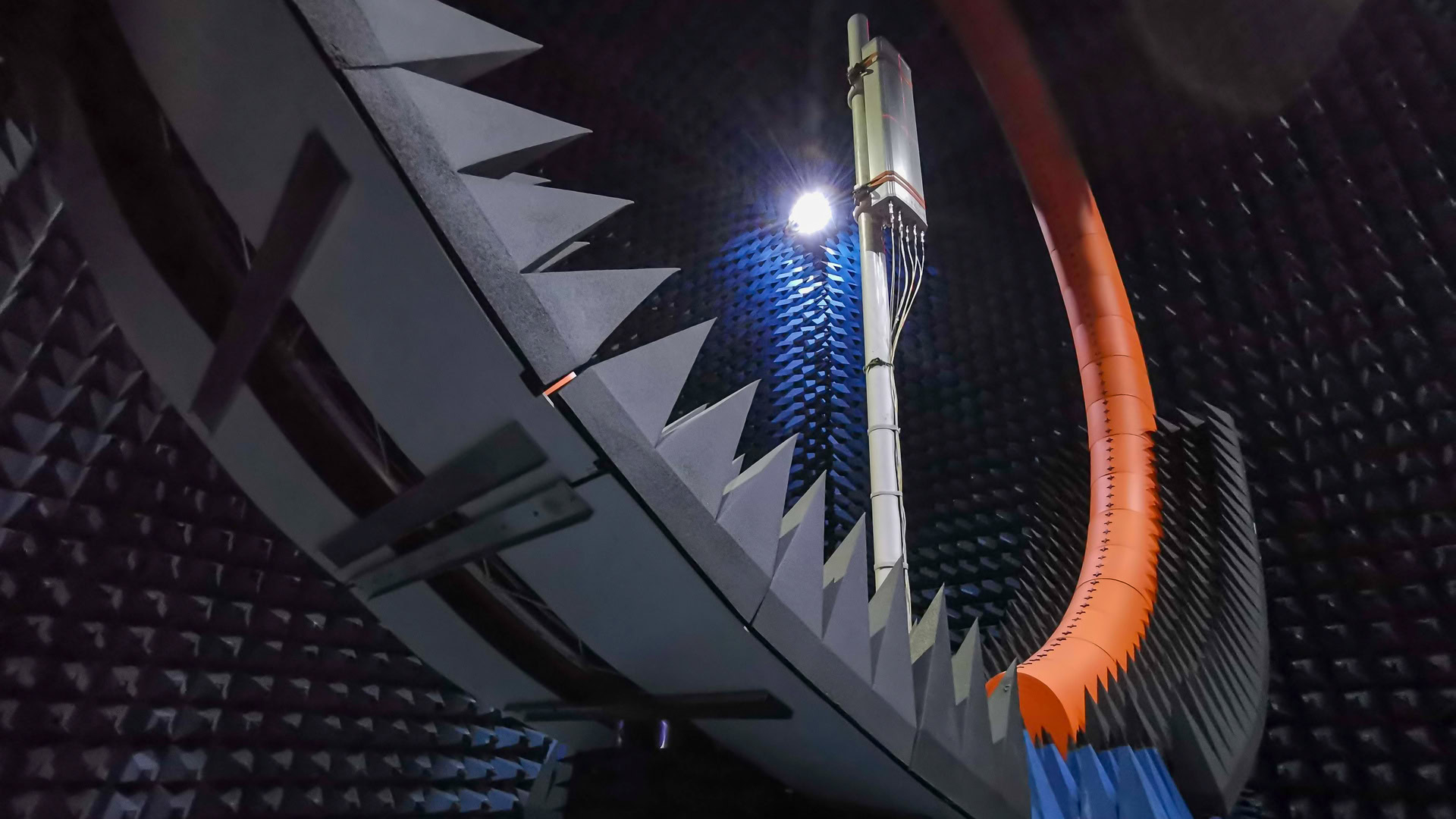
Most of the people I know in the real world have never heard of HUAWEI nor seen a HUAWEI phone. If they have, more often than not it’s thanks to the Trump-vs-HUAWEI headlines that have been a staple of tech news in recent months.
Huawei, the world’s second-largest maker of mobile phones and China’s largest, is a behemoth in every respect of the word. With 180,000 employees spread across 14 offices, 36 joint innovation centers, and dozens of countries, HUAWEI cannot be ignored when viewing the global picture.
As of the first quarter of 2019, Samsung led the worldwide market with HUAWEI, Apple, Xiaomi, and vivo rounding out the top five, says IDC. In China more recently, the top five include HUAWEI, Xiaomi, vivo, OPPO, and Apple, also according to IDC. This is largely due to sales of 2018’s Mate 20 series, and 2019’s P30 and HONOR 20 series.
HUAWEI is so much more than phones, however, and the company has lofty ambitions for 5G and the internet of things. The company invited Android Authority and other media outlets to tour its facilities in and around Shenzhen, China for a week to provide a more complete look at the company. Here’s what HUAWEI revealed about EMUI, Honor, HarmonyOS, and more.
5G is ON
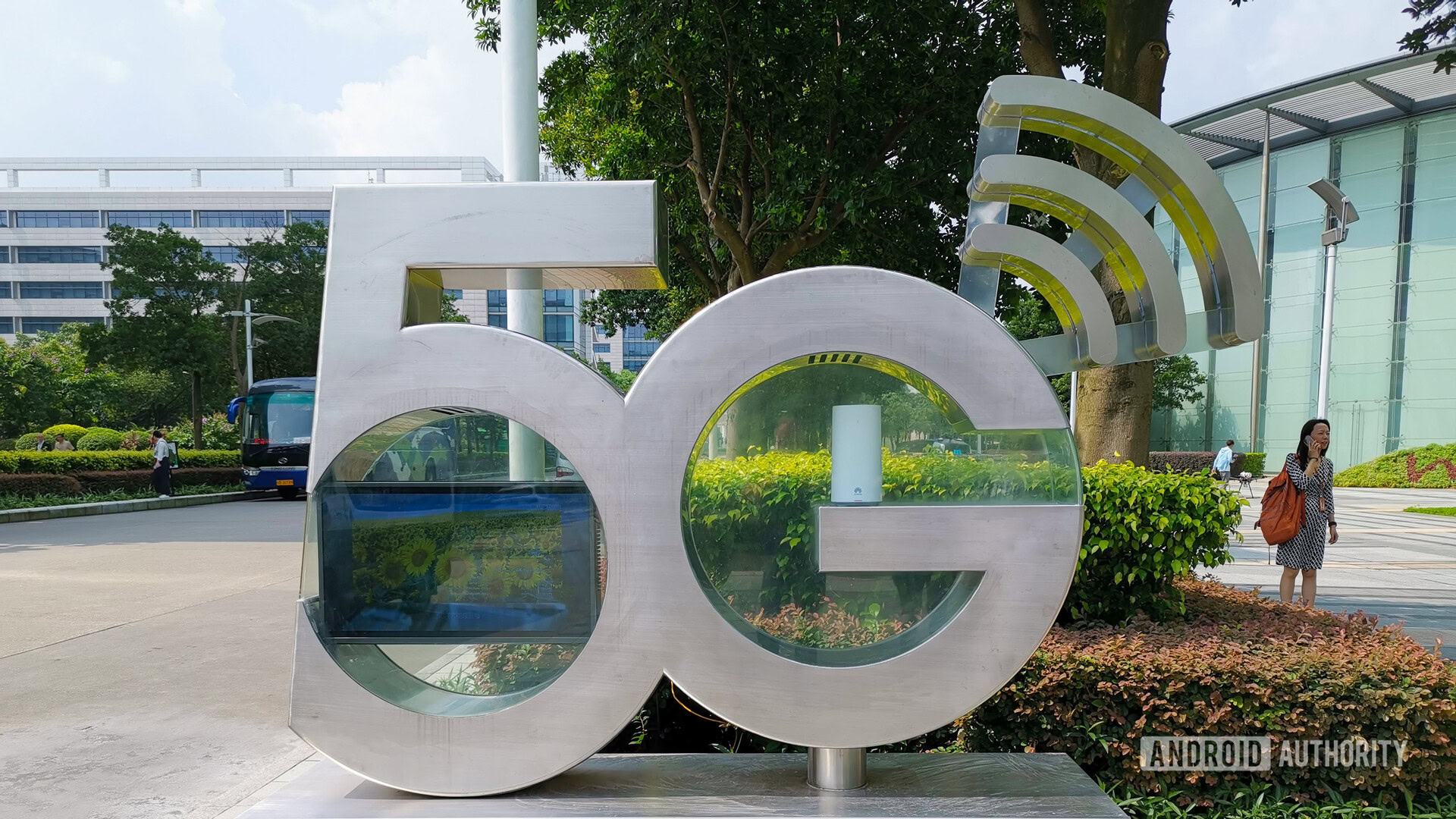
The discussion surrounding 5G is noisy and confusing. There are multiple standards, differing technologies, and varied slices of spectrum all involved in making the next-generation wireless network tech take off. HUAWEI may be banned from supplying U.S. network operators with 5G equipment, but that doesn’t mean it is missing out in a larger scale.
Based on HUAWEI’s 5G Experience Center at its Shenzhen headquarters, governments and businesses are its primary customers. HUAWEI sees 5G powering nearly all industries, including manufacturing, retail, construction, finance, transportation, healthcare, real estate, agriculture, utilities, and more.
Huawei’s 5G can deliver blistering speeds. Its latest tech supports standalone 5G. The 5G available today from AT&T, Sprint, T-Mobile, and Verizon Wireless all relies on 4G LTE for uploads. The standalone spec provides 5G speeds up the upload (167Mbps) and download (852Mbps).
The company showcased a number of use cases for the burgeoning tech and, to put it mildly, the sky is quite literally the limit. Video plays a large role. For example, HUAWEI created a 5G-enabled drone that can stream 360-degree 4K video to law enforcement. We saw a demo of this and it’s quite something. Viewed through a virtual reality headset, police can obtain an incredibly detailed birds-eye view of events (such as protests in Hong Kong).
HUAWEI also developed a 5G, 4K live-streaming backpack. This $1,600 kit for television journalists can replace a $15 million TV van for providing high-quality content from on-site.
As for the networking gear itself, HUAWEI has multiple types of nodes available to fit municipal and government needs when developing coverage plans. Mundane stuff is under development, too, such as consumer 5G receivers to provide in-home internet.
Bottom line, HUAWEI is full-on when it comes to 5G, despite the company’s no-go status in the U.S.
HarmonyOS and HONOR Vision
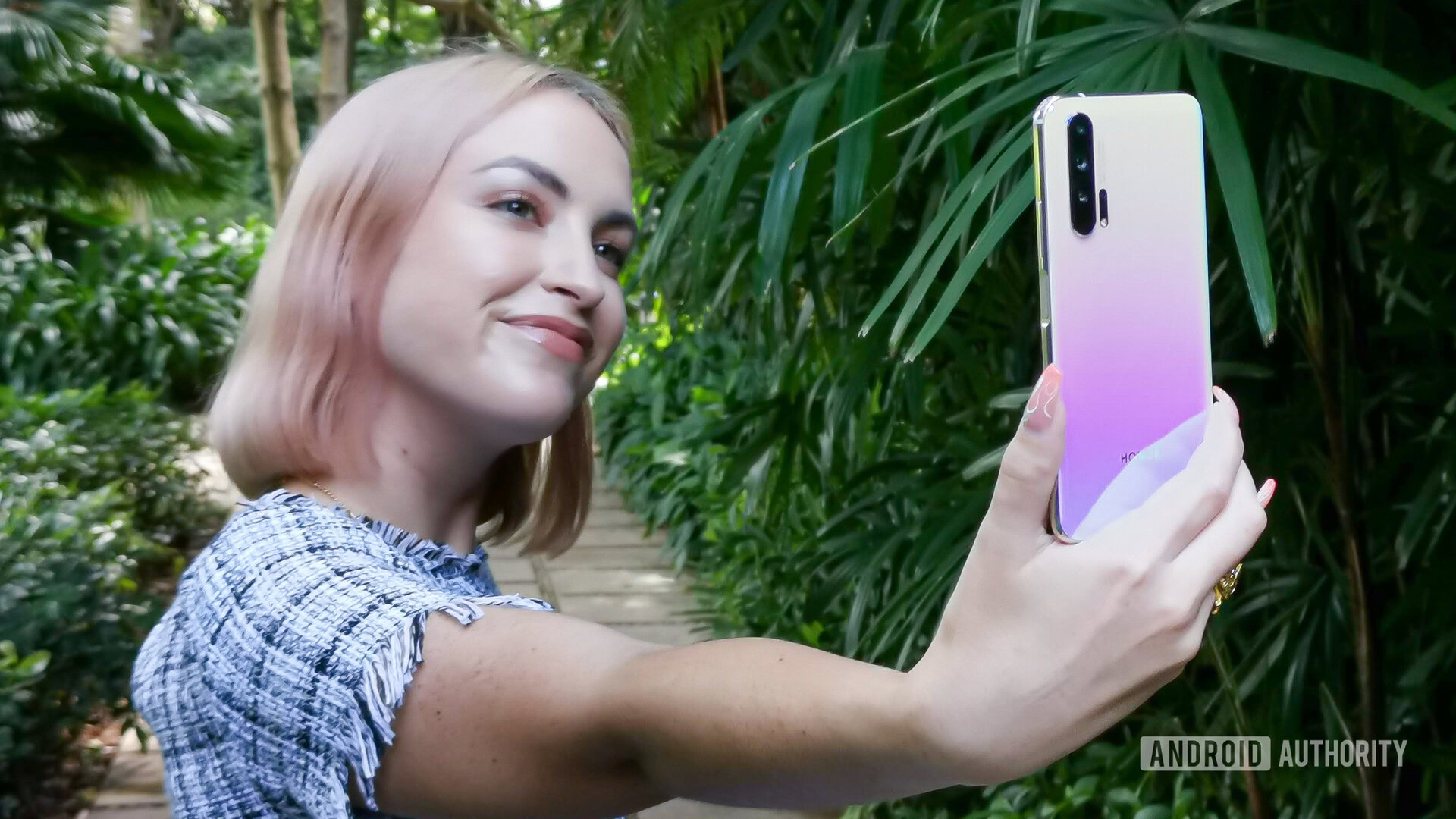
HarmonyOS is HUAWEI’s self-made platform that it will use in lieu of Android if it has to. The platform is already shipping on the HONOR Vision smart TV (HUAWEI calls it a “smart display”), and yet HarmonyOS is anything but ready for primetime.
The platform is a “microkernel-based distributed OS for all scenarios,” according to the company. It is open, meaning other developers can download it and submit improvements. However, there’s no SDK and HUAWEI would not answer questions about whether or not an SDK will ever be made available.
HUAWEI claims HarmonyOS will eventually appear on smartphones, smart speakers, computers, smartwatches, wireless earbuds, cars, and tablets. While HarmonyOS is available in the smart TV, it will be years before we see it in phones and other mobile devices. The company demonstrated the platform on the HONOR Vision alone, and would not show how the platform might work on other form factors. That leads me to believe it’s simply not ready, despite HUAWEI’s claim that the company can “immediately switch to HarmonyOS.”
HarmonyOS looks a lot like Apple's tvOS.
So, what then is HarmonyOS? On the HONOR Vision smart TV, it looks a lot like Apple’s tvOS. It consists of graphical menu for sorting through and accessing content such as movies, TV shows, games, and apps.
HUAWEI is pitching the HONOR Vision as a home entertainment device with the ability to make video and audio calls, to share pictures and video, to exchange notes and information, as well as to manage in-home devices such as smart thermostats and lighting.
The hardware includes a 55-inch 4K LED panel at 400 nits, and quad-core Honghu CPU/GPU, six speakers, and a pop-up camera for video calls (Pro model only.) The screen looked great and HUAWEI demonstrated how the HONOR Vision can be used to make video and audio calls. The quality of video calls was quite good. Using 4G LTE, a HUAWEI exec answered a call made from the TV and appeared on the screen. Calls are completed in 1080p HD, rather than the TV’s native 4K resolution. Six microphones pick up sound and use noise cancellation in order to hear voice commands.
The process involves using your phone. One thing I like: An NFC tag lets you instantly pair your phone with the smart TV. The phone can act as a touchscreen, speaker, keyboard, and of course remote control.
HarmonyOS and HONOR Vision are for China only.
There are some incredible limitations. The HONOR Vision relies on HONOR Magic Link for smartphone controls. This means only HUAWEI and HONOR phones can interact with the HONOR Vision smart TV. When asked if HUAWEI will expand access to other platforms or phone makers, the company insisted it has not yet made those decisions. Moreover, though HarmonyOS can support any voice assistant, HUAWEI has no timeline for using anything other than China’s Yo-Yo.
Bottom line, HarmonyOS and HONOR Vision are for China only for the foreseeable future.
Scratching the IoT itch
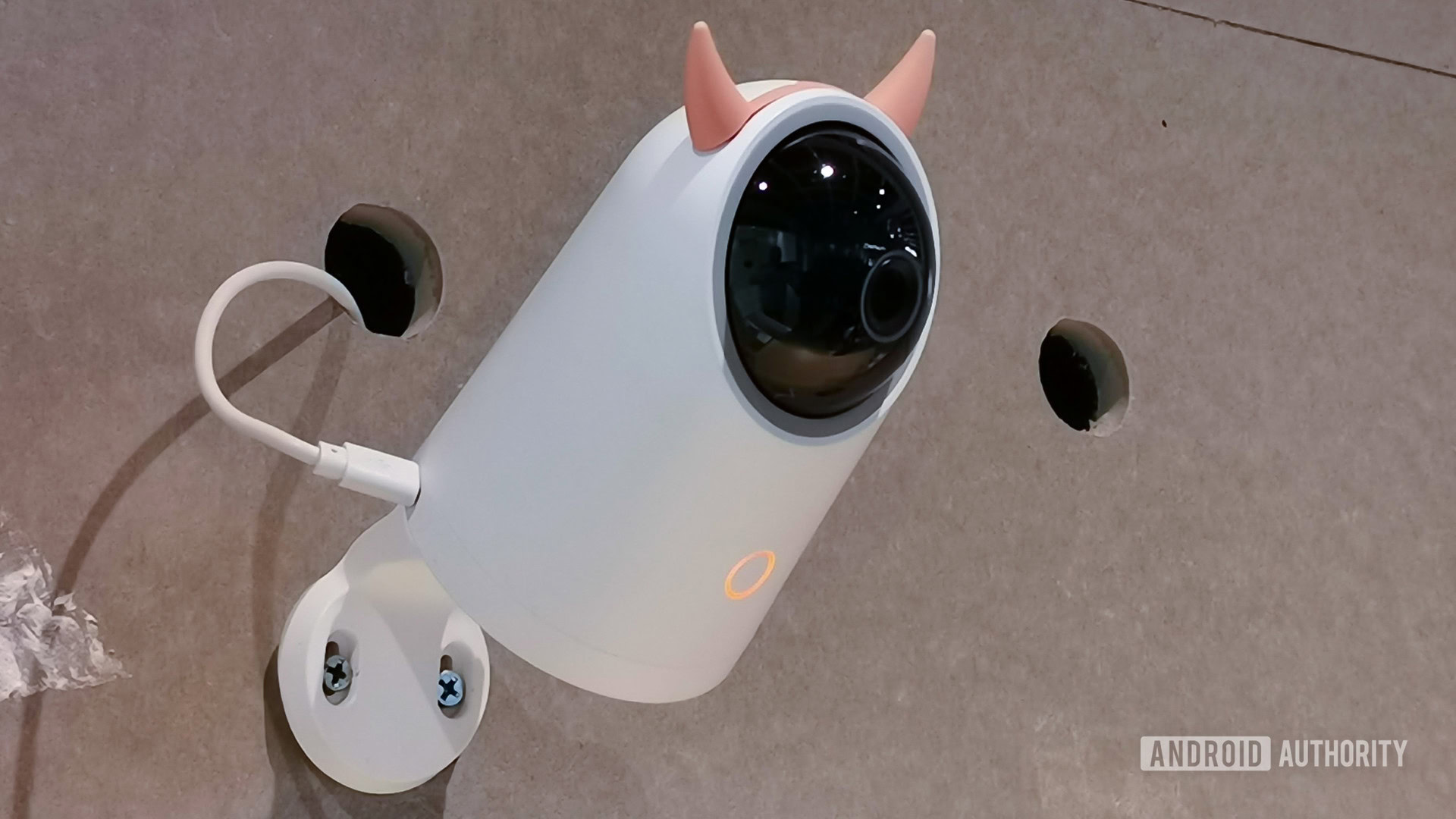
The same appears to be true for the bulk of HUAWEI’s internet-of-things (IoT) approach. We took a tour of its IoT innovation lab and saw a variety of smart home products that HUAWEI developed together with a range of partners. The company says it has more than 6,000 OEM partners working on various bits of gear.
Highlights included smart security cameras complete with personality, smart thermostats, humidifiers, lights, projectors, and more.
HUAWEI showcased an entire smart kitchen, smart bedroom, and, yes, a smart bathroom. The kitchen featured appliances such as refrigerators, microwaves, dishwashers, and coffee makers that could talk to one another; the bedroom included smart lighting, bed, and mirror; while the bathroom featured smart sensors, lights, and (ahem) a smart commode.
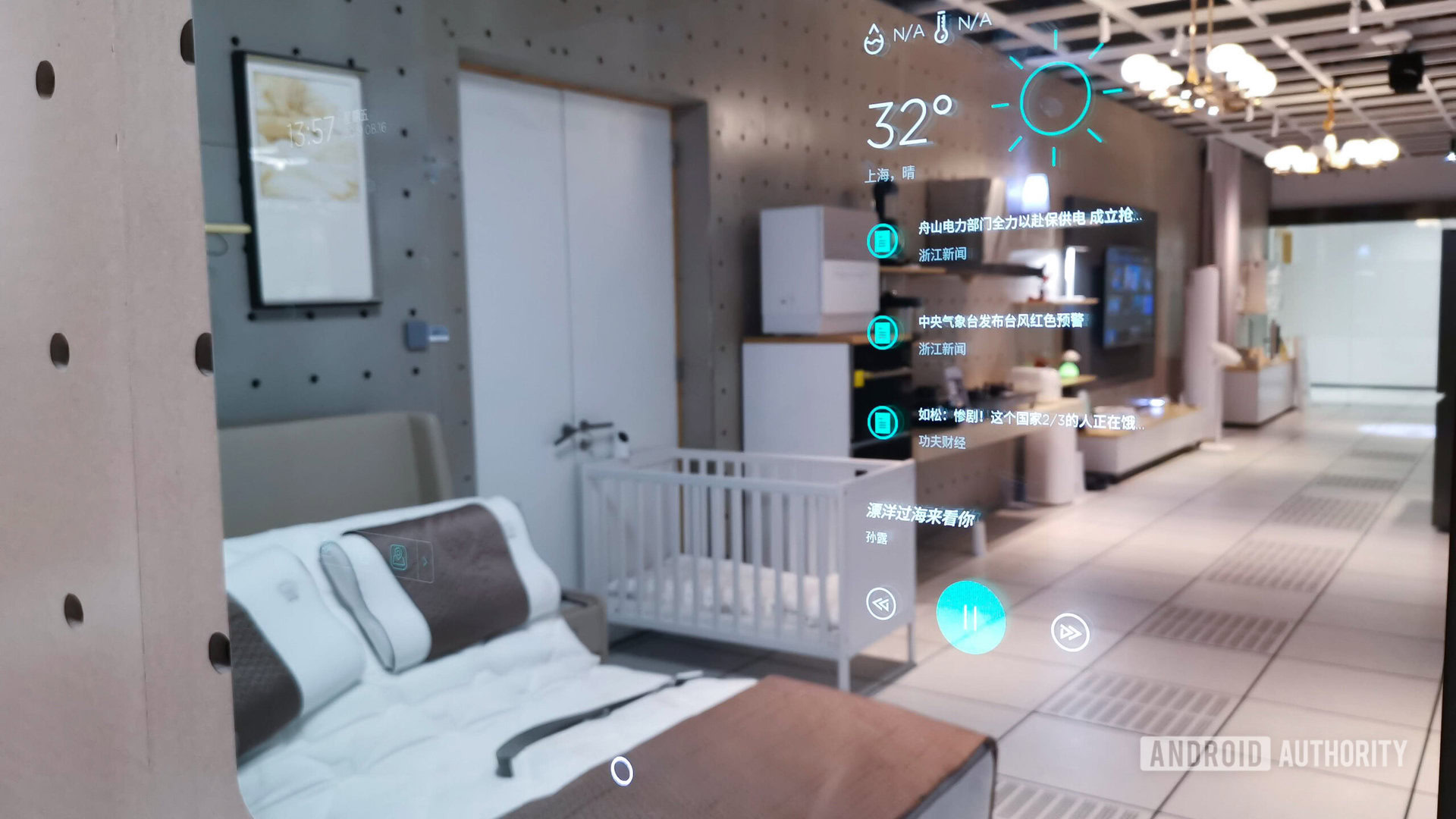
The point here was to highlight how these environments can be put to use to improve or simplify our lives. My favorite was the smart mirror that included a heads-up display with the time, temperature, upcoming appointments, and even music controls. I need this in my life!
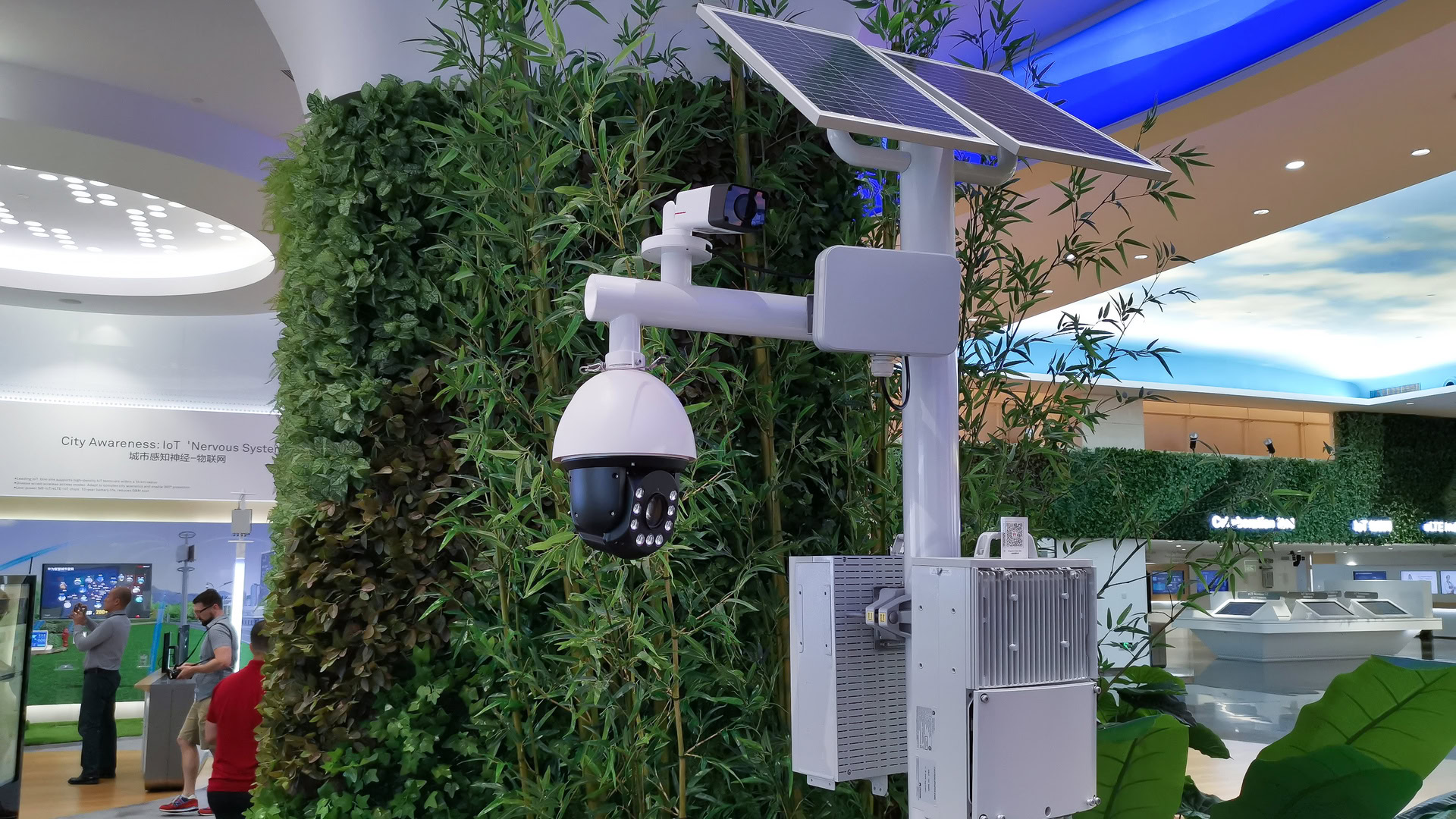
While the majority of these devices rely on standard Bluetooth and Wi-Fi connections, there wasn’t a single brand name I knew or had heard of. In other words, while it’s great to see HUAWEI partner with so many companies to innovate for IoT, we should not expect to see much (if any) of it outside of China.
HUAWEI HQ is growing
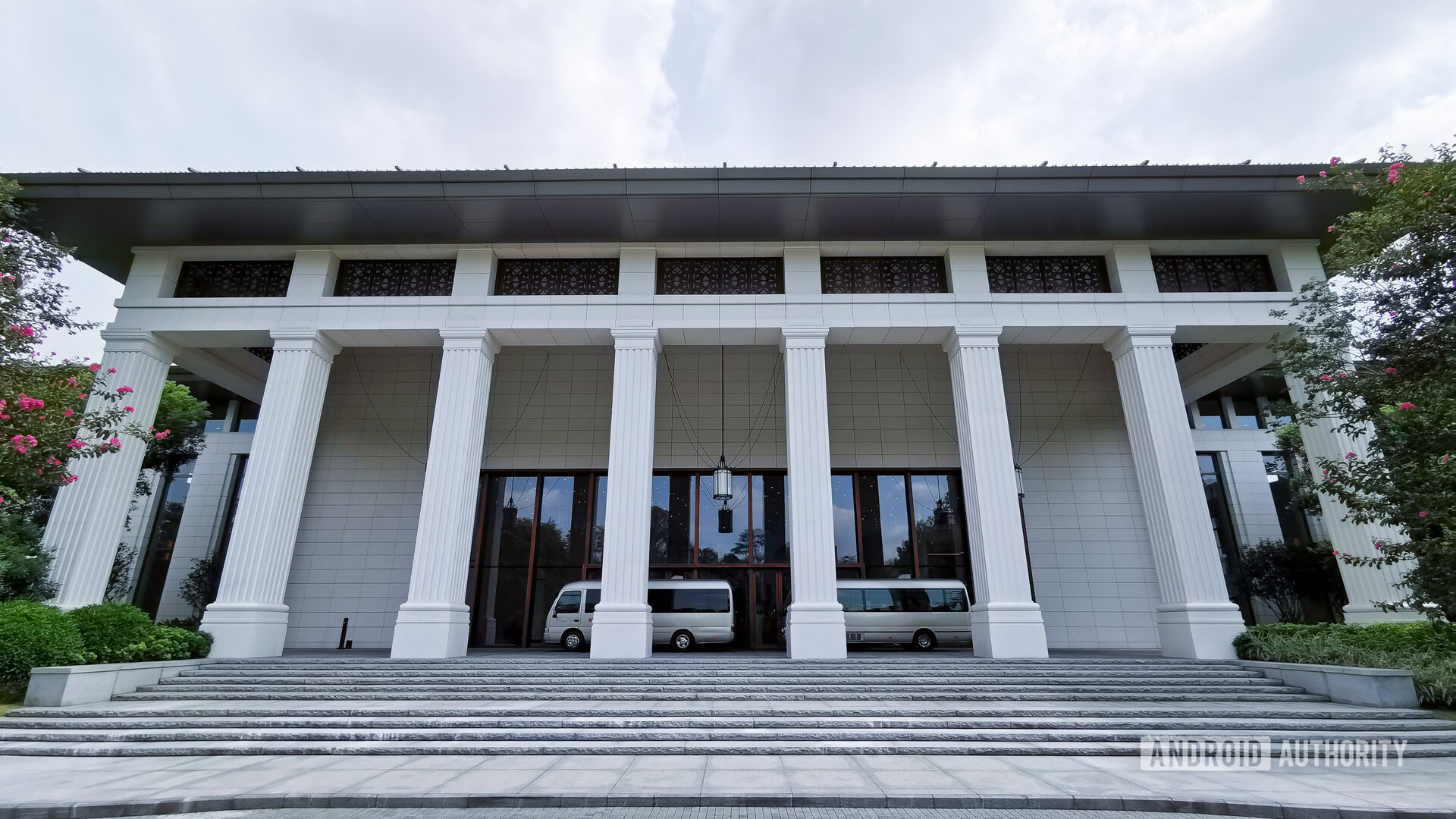
It takes a lot of people to run a company the size of HUAWEI. The Shenzhen headquarters is the size of a state university, and the campus feels similar to Big State U. Dozens of buildings are spread out across a number of city blocks with greenery and pathways in between. HUAWEI’s number-one spot in China has given it plenty of cash for expansion.
Some 40,000 employees are located in the Shenzhen area. HUAWEI broke ground on a new campus, called the Ox Horn, European Village, at Songshan Lake, several years ago. It looks like Euro Disney. The campus is impossibly large and something out of a European storybook. It’s so big, in fact, that a train runs through it to help shuttle employees back and forth more conveniently. Cost? $1.5 billion.
HUAWEI says about 18,000 employees have been moved from Shenzhen to this new facility in Dongguan, with that number expected to rise to 25,000 by the end of the year. Much of the work done there is research and development. This new campus is much closer to some of HUAWEI’s manufacturing and testing facilities.
The company allowed us to tour the HUAWEI P30 assembly line, where we watched the motherboard silicon fill up with processors, capacitors, and other modules applied through dozens of machines. Despite all the machinery, more than a dozen engineers were stationed along the line to perform inspections and run tests on the devices as they moved along. The line we saw spit out a complete P30 once every 28 seconds. The line was just one of 10 in that particular building.
In 2018, HUAWEI invested $15 billion in R&D. The company plans to invest another $100 billion over the next five years.
Check-Mates, HONOR-ifics, and GUIs
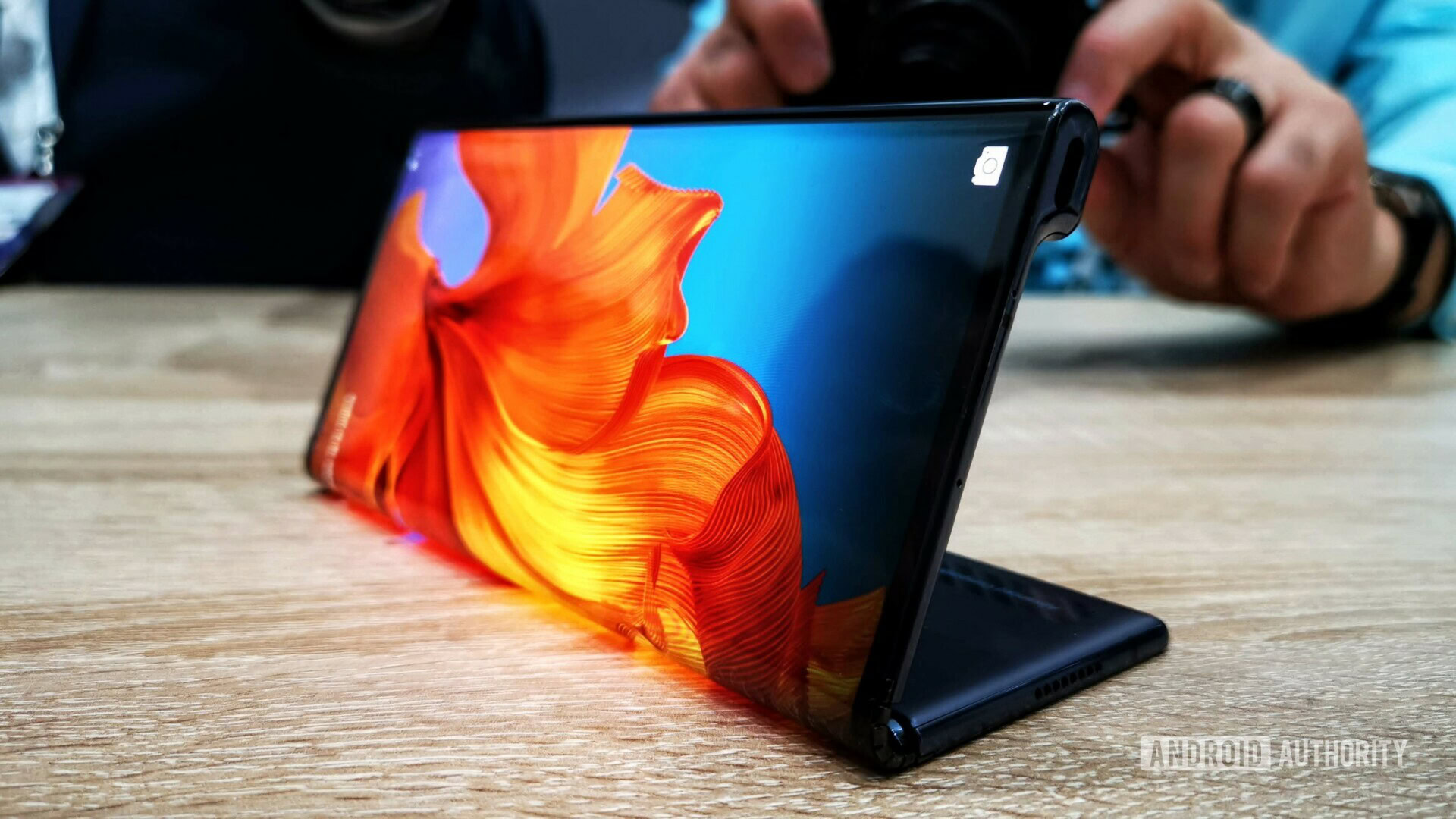
The Mate X, HUAWEI’s folding phone, is one of the most interesting devices announced so far this year. It first appeared at Mobile World Congress in February and has since only popped up a few times in the hands of execs. It’s so rare to see one, in fact, that most HUAWEI employees have yet to lay eyes on it.
HUAWEI had one on hand for us to look at. Our impressions of the device are mostly unchanged since we first saw it six months ago — as is the device itself. HUAWEI refined the power button along the side edge, and has improved how the seam appears when the device is unfolded. Even the unit we saw in Shenzhen is a prototype and doesn’t necessarily represent what will eventually ship to consumers. The company played coy when asked exactly when the phone will launch.
HONOR phones represent more than 50% of all HUAWEI handset sales.
The company spent a lot of time talking to us about the HONOR 20 Pro, which Android Authority reviewed earlier this year. It’s a big seller for the company and helped propel its sales figures during the second quarter.
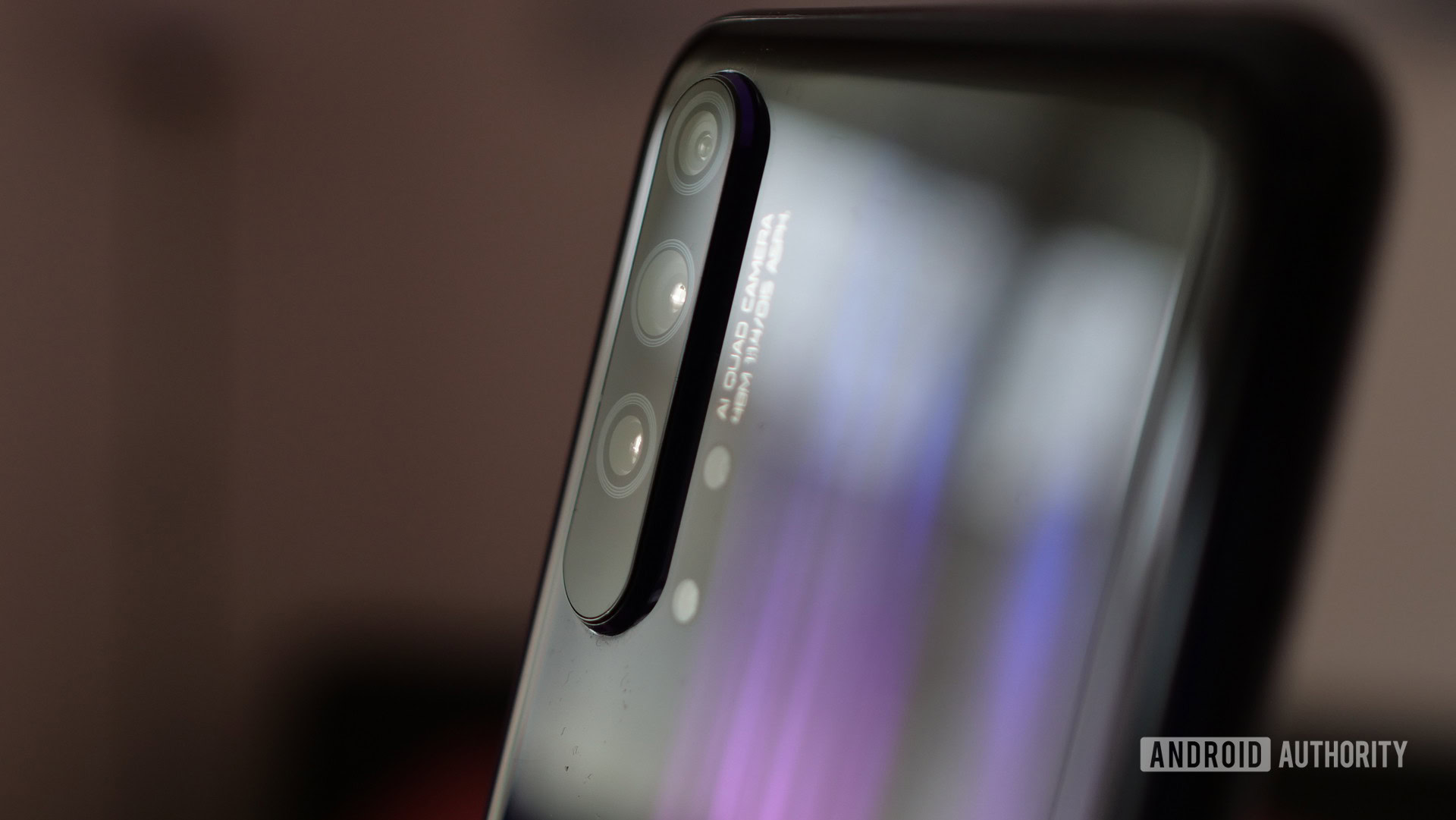
Here’s a mind-boggling statistic for you: HONOR phones represent more than 50% of all HUAWEI handset sales. HONOR is HUAWEI’s budget-friendly brand that targets younger users.
Then there’s EMUI 10. HUAWEI revealed EMUI 10 at its developer conference earlier this month. If you want all the details, you should read our complete hands-on look at the refreshed UI.
What I found most interesting was the work HUAWEI says it put in to improving the “experience.” Most often this meant making certain things faster, others smoother, and yet others brighter or cleaner. For example, HUAWEI fretted over the response time to screen presses. If the reaction is too quick users feel jolted, if it is too slow users believe their phone is sluggish. We’re talking about milliseconds here. HUAWEI used test data to determine the best time.
EMUI 10 is headed to the P30 Pro first, starting in September.
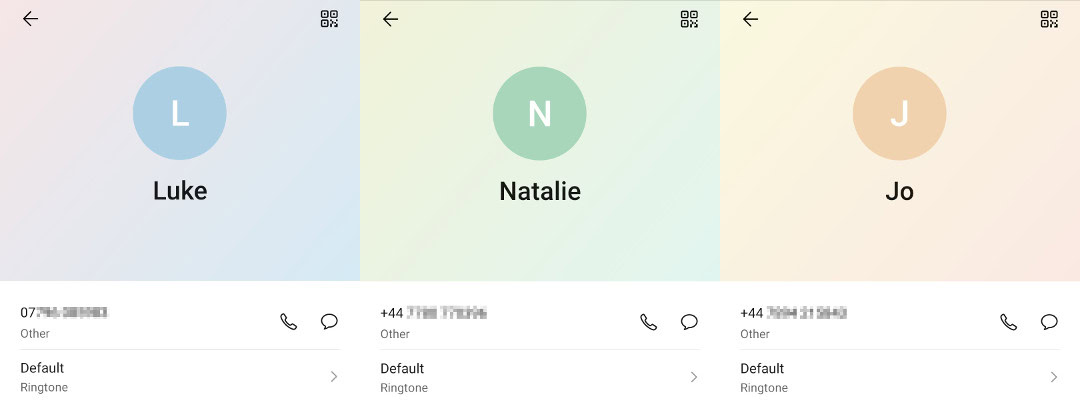
What HUAWEI wouldn’t say
If one topic appeared to be off limits during the visit, it was HUAWEI’s relationship with the U.S. Company executives steered the conversation around and away from Trump and his administration’s policies with China in general and actions against HUAWEI in particular. However, there was plenty to read between the lines.
Based on the 5G, IoT, and HarmonyOS details shared with us, it’s clear HUAWEI is restraining itself. The majority of these efforts are focused in-country, and when asked about rest-of-the-world deployments HUAWEI remained quiet. In other words, the company is waiting to see how the trade war and Trump administration will impact its future. With “no timelines” in place to expand some of these products to the U.S. or anywhere else, it appears that HUAWEI is holding back some investment.